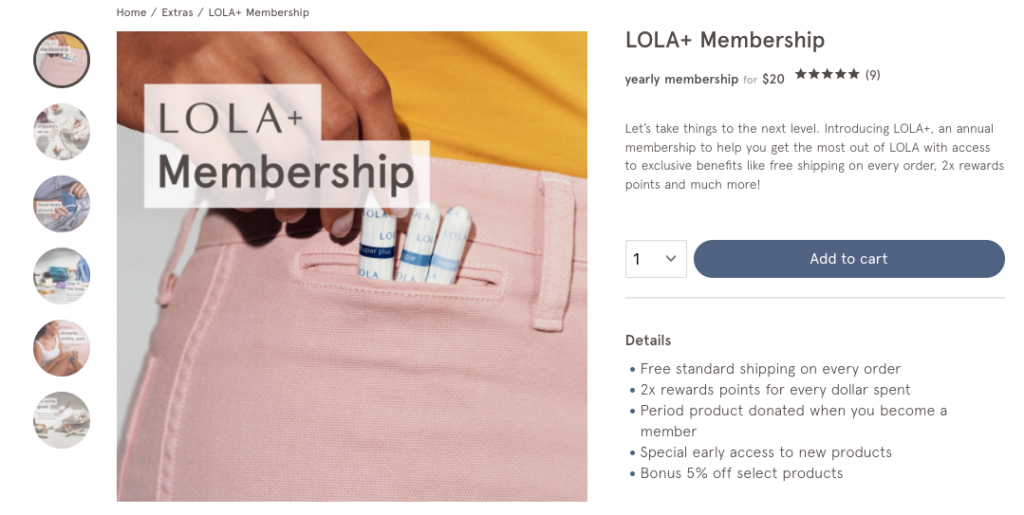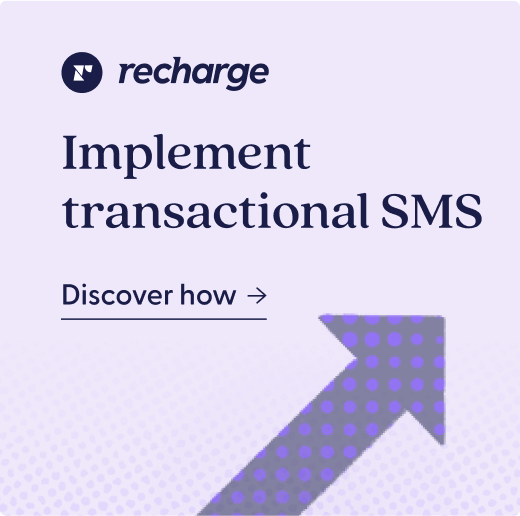How can you tell if your business is ready for subscriptions? What kind of subscription program would work best for your brand? What’s the easiest and quickest way to get started with subscriptions in this fast paced digital economy?
Whether you’re looking to start a subscription business or are an established brand interested in offering subscriptions—we’ve got you covered. We’re here to answer all of these commonly asked questions and give you and your brand the confidence to join the predicted $500 billion by 2025 subscription market. Let’s dive in.
The low down on subscription commerce
First let’s talk about the value of the subscription business model. Quite simply, we like to think of subscriptions as turning one-time transactions into long-term customer relationships.
Subscriptions add convenience to your customers’ lives by regularly supplying them with the products they love or by giving them access to exclusive products and perks. Meanwhile for merchants, a subscription model allows you to foster ongoing relationships with your customers and benefit from repeat orders (60% of consumers have had the same subscription for over a year).
What’s more, repeat customers are 50% more likely than a new customer to make another purchase. Subscribers also spend on average 33% more by selecting cross-sells, upsells and/or one-time product add-ons and recurring revenue streams are predictable, have reduced customer churn and higher average order values.
Getting started with the subscription model
So we’ve made the case for subscriptions, now let’s get to the practical advice. After making the decision to start offering subscriptions there’s two important questions to consider.
- What kind of subscriptions would best serve our business?
- What kind of subscription management solution should we use?
Let’s start by focusing on the latter. Subscription management solutions like Recharge make it quick and easy to set up recurring offerings for your brand. They allow you to set up flexible subscriptions with options for skips, swaps, and one-time purchases that encourage your customers to stay with your business longer.
One of the main keys to a successful subscription program is giving subscribers flexibility over their subscriptions. Our data shows that the more a subscriber engages with their subscription (which we define as taking an action in their customer portal like, skipping an order, swapping a subscription product or trying a one-time product) the more they increase their lifetime value and reduce their likelihood to churn.
To help you find the subscription management solution that works best for your business, we created A Merchant’s Guide to Subscription Management. Inside we break down the various elements of subscription management (subscription billing, merchant tools, shopper tools, analytics tools and payments tools) as well as provide a vendor evaluation worksheet so you can select a provider that best fits your needs.
With that covered, it’s now time to figure out what kind of subscription would be best for your business to offer.
Offering the right subscription for your business model
There’s three types of subscription models with various different benefits and it’s important to understand all three to decide which would work best for your company.
Curation is the most popular subscription model with 55% of merchants choosing it overall. This is where the merchant themselves provides a curated selection of product offerings to deliver to subscribers on a regular cadence. Often customers aren’t aware of what’s in these boxes, tapping into the surprise and delight factor that consumers so often enjoy. Curation subscriptions often also include added information alongside their products (like how-to guides or added information to get the most out of the goods).
Next up is replenishment which makes up 32% of the subscription economy. Most often utilized by CPG products, this is where consumers receive the same product or products on a consistent basis. Whether that’s coffee beans, household cleaning products, golf balls or contacts, replenishments are often known as subscribe-and-save (due to the propensity for brands to offer a discount alongside the subscription to incentivize consumers).
Last up, and the fastest growing subscription type, are access or membership subscriptions (with rank in at 13% of all subscription models). In the era of streaming services like Netflix, Spotify or Amazon Prime this business model should be fairly obvious. For a fee you gain access to various benefits the membership service provides. Whether that’s a digital library of content, discounts, access to exclusive products or truly whatever benefit you can dream up to provide to your subscribers.
The best part about membership subscriptions is that they’re the easiest type to implement with your business. On our podcast Hit Subscribe, we talked about why membership subscriptions are easy, flexible and valuable and chatted about how to use them to provide rewards, perks or exclusive products.
For a real world example of a membership/access subscription model, LOLA, makers of feminine and reproductive care products, have various subscription membership offerings that they incentivize with rewards like free shipping, early access to products, donations and discounts. They also use the replenishment subscription model with several of their feminine and reproductive care products (with various subscribe-and-save discounts incentivising their subscription options).

If you’re curious to learn some best practices about membership subscriptions and in particular how to price them based on the value you’re providing, check out our deep dive on the ins and outs of membership pricing.
Setting up your subscription model
Whichever subscription management solution you choose there are some important steps to follow before you’ll be off and running in the subscription commerce world. If you’re using Recharge (which you can get started on today for free with no monthly fee) you can use our guided onboarding to set up your subscriptions and checkout flow.
Whichever solution you’re using, after setting up your subscriptions, it’s important to make sure your logistics and shipping are in order and capable of supporting fulfillment of regular purchases on a recurring basis. After that’s all checked over, it’s time to run a test order then set your subscription products live.
Now the exciting part, letting your customers know (especially your most loyal consumers who’ve made multiple purchases) that you are now offering subscriptions. This is where it’s very important to gather valuable customer feedback on your subscription service.
For example, are customers hesitant to subscribe to products because they aren’t certain of the value your subscriptions offer? Do they wish other products were on subscription? Do they find their customer portal clunky to manage? It’s vital to your subscription program to gather as much customer feedback as possible to make the most informed and effective decisions. Test new subscriber suggestions and always be looking for ways to enhance the customer experience and create a brand community out of your most loyal customers.
Lastly, if you’re with Recharge, you can optimize your subscriptions with key integrations to create a technology stack that meets the needs of your customers at every phase of their journey. For instance, what customer wouldn’t want to manage their subscription with a quick text message (and what merchant wouldn’t want to benefit from a 30% increase in customer lifetime value with transactional SMS)? Check out RechargeSMS (free to use for all Recharge merchants) and let your customers easily modify their orders, swap products, add one time purchases or skip/delay upcoming shipments through text message.
Ready, set, go
So what are you waiting for? If you’ve read this far, nodded along at the benefits, decided on a subscription model that works for your brand, and dreamt up the products you’d offer by subscription—then you’re ready to get started with subscriptions.
And if you’re looking for some help or tips along the way check out our resource library for expert advice and industry insights that you can use to run a best-in-class subscription business.



